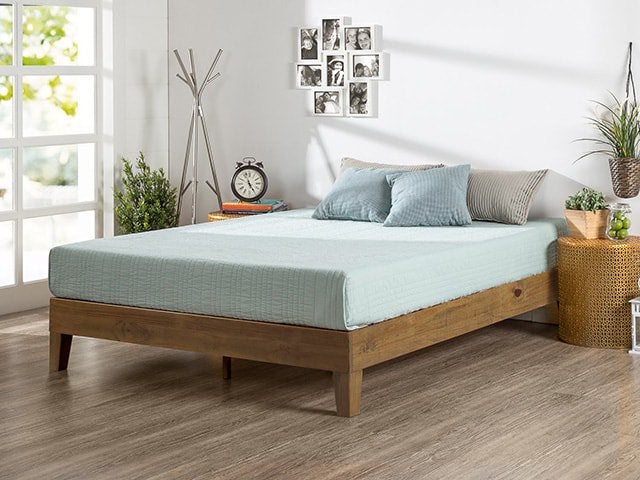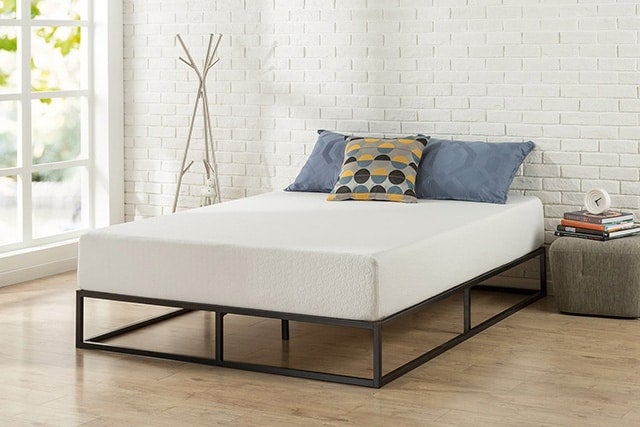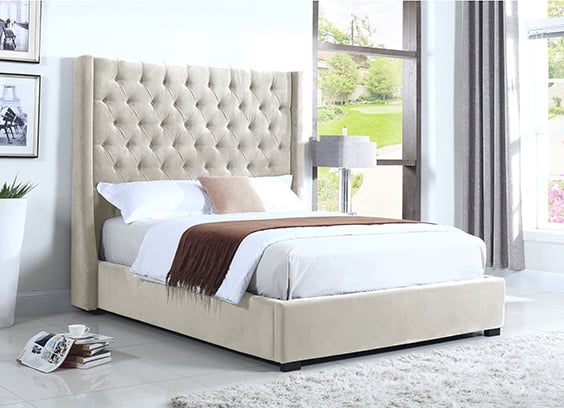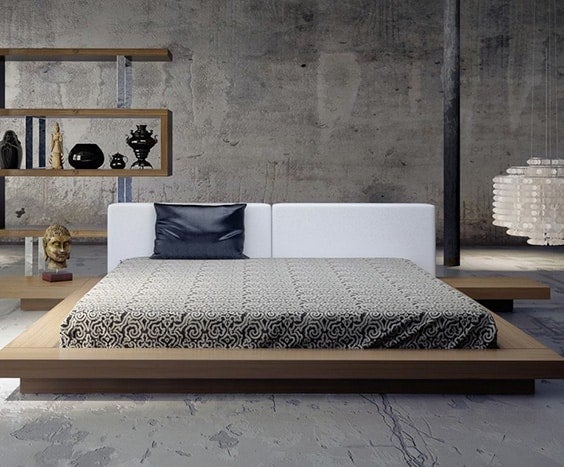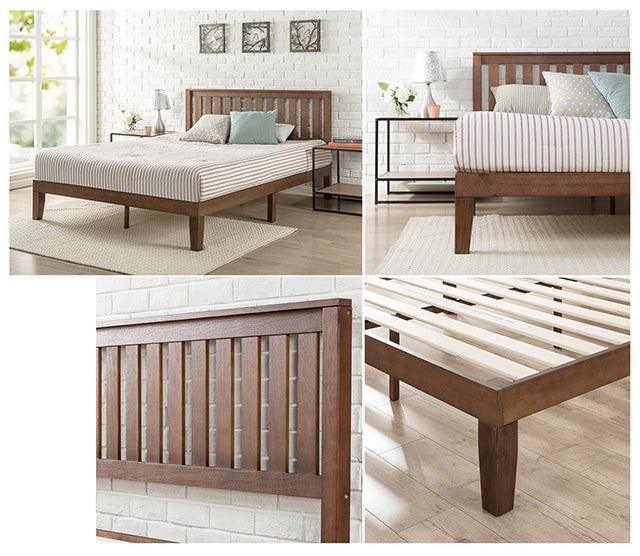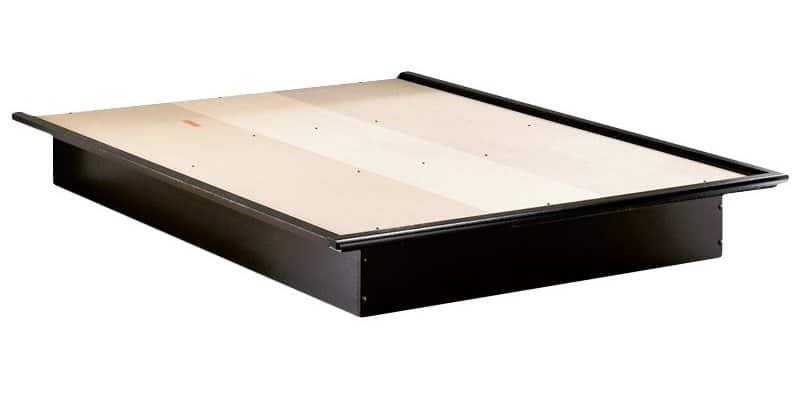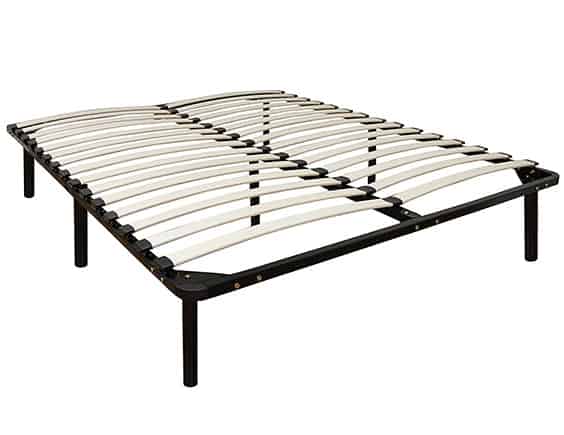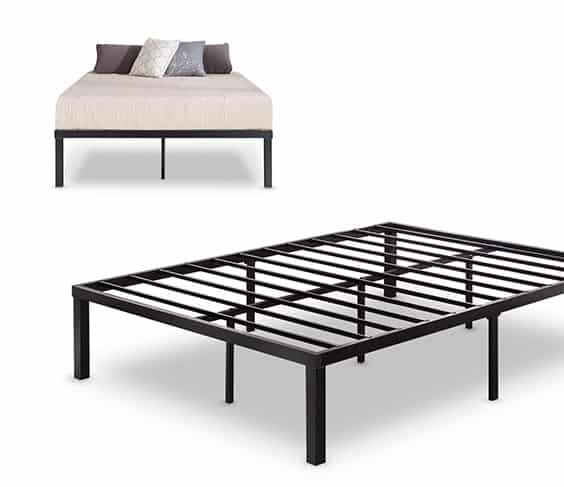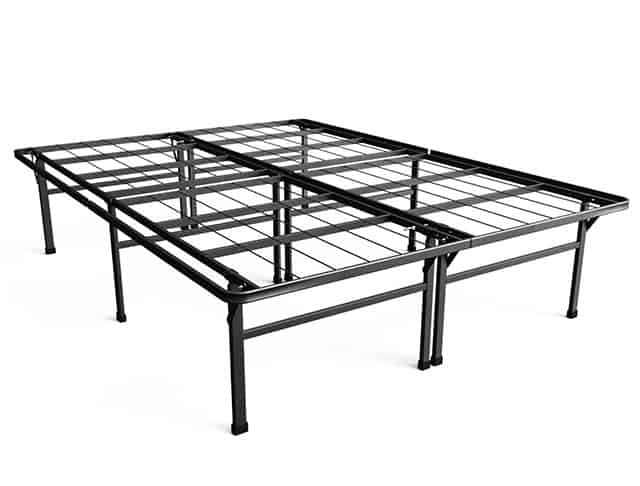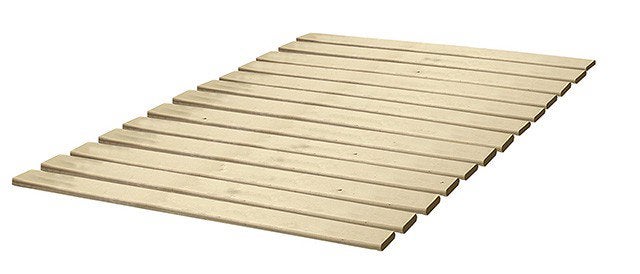With the introduction of newer materials in mattress construction has come specific maintenance guidelines you need to follow concerning your mattress care and upkeep. Foams are popular sleep comfort surfaces due to how well they conform to help dissipate weight and reduce pressure points. Unfortunately, this material also can easily compress and breakdown when not supported correctly.
The platform bed has become the support frame of choice for most mattresses that use foam construction. It offers a sleek, often less expensive, design than more traditional bed frames.
I too was a bit confused when recently bed shopping concerning the differences between a platform bed and other options. After searching various keywords, I finally discovered the information I needed to determine exactly what I needed to know to match my mattress to its best support. I’ve outlined below what a platform bed is, and hopefully have clarified your possible need for one.
You may want to read: Best Platform Bed Frames
What is a Platform Bed?
When I found myself asking this exact question, I knew it was time to find a complete answer on the chance I found myself spending good money on the wrong things. Initially I found myself asking what a low profile platform, floating platform, or slatted platform was and why were there so many choices. I quickly discovered it was all much simpler than I thought.
In short, a platform bed is a simple frame made of various materials that offers support for anytype of mattress without the need for a box spring. Platform beds used to only be a lower profiled, flat, or slatted support surface that was easy to fit in most contemporary decors. But with the increase in foam mattress materials, platform beds have evolved from the seriously simple, to a more eclectic style that is sure to fit into anyone’s interior design.
Despite the variances in style, platform design have a few defining characteristics that make them what they are. And you need to know what these are in order to make sure you have what you need for your mattress choice.
Lower Profile
The first thing you should be aware of is that platform beds are usually much lower in profile than traditional bed frames. Many times they stand less than 12 inches in height, with taller ones reaching up to 18 inches. This can be problematic for people who struggle to get into and out of bed.
But you should also be aware that you CAN place box springs on a low profile platform bed if you have a mattress that is of material that can be supported by it. By doing so you can raise the profile considerably.
Little or No Clearance
Since many beds are low profile, their design often includes very little clearance space under the bed. In fact, you may have none at all as it is popular to design enclosed frames, or frames that include storage drawers beneath the sleeping surface. Beds that do allow for space beneath the mattress often only have a few inches of clearance, so be sure to check for your needs before purchase.
What is a Floating Platform Bed?
You may also discover floating platform bed designs that center the bed support underneath the bed rather than along the sides or corners of the bed. This design makes the bed look as if it is floating despite having a very sturdy base. However there will be little, to no room available for storage underneath.
Head and Footboards
Traditional platform beds do not include head or footboards, but with new designs constantly being introduced, you can often find many headboard additions to provide more choices to the consumer. Occasionally you may also find a platform bed that mimics a more traditional bed design and includes both, but know that these also will be of lower profile- so if you plan on using a boxspring you may cover up the majority of the head and footboard surface.
You may want to read: Can You Use a Boxspring with a Platform Bed?
Solid Surfaces
Platform beds have one of two types of support surfaces. The first is a solid surface that usually includes holes, or slits, to provide air flow. Solid surfaces can occasionally change the feel of your mattress to make it more firm, especially if you have a heavier body type.
Slatted Surfaces
The second type of support surface is made of a series of wooden slats. A slatted platform bed allows these to be placed close enough together (usually 2 to 3 inches apart) to provide proper foam mattress protection, but also increased airflow, and a bit of flex and give to the weight you apply when you sleep. This is often the more preferred set-up, and more commonly found.
This is only effective if the slats are close enough together, so if your mattress requires a platform type surface, be sure to double check slat widths and spacing- or you may find yourself at the local hardware store to help make up for the lack of support.
Metal Surface
You may also find a woven metal support in certain models. This is not always ideal as it may put too much pressure on certain types of foam over time. It does work well with a boxspring, or those mattresses that are able to accept a wider variety of support. You can also add a Bunkie board to these (explained below).
Cross Sectional Supports
Any beds larger than a twin should have center supports that run down the middle of the bed with at least one (if not three) full legs for added platform support. This may be part of the main frame itself, or support the surface from underneath. You may also find another support across the bed for additional weight distribution.
These supports are important, and platform beds that do not include at least one them is going to be of lower quality, and not last long at all. However, these supports also make underbed storage more difficult. For example, a full size trundle would not be able to fit under the bed, but a twin might- so be sure to take measurements if you have these types of needs.
Bunkie Boards
When researching platform beds you are sure to come across the term: Bunkie board. A Bunkie board is a board you can purchase to turn your existing bed frame into a platform bed, or the support you can buy if trying to make your own.
Bunkie boards can be either of solid, or slatted, design, and are made from a variety of different materials. These are also helpful for acceptable platform surfaces if you are looking to help increase overall support or weight capabilities.
Conclusion
A specific style of construction is part of the definition of a platform bed, with usually a lower profile, more solid support to negate the use of traditional box springs- although you can use them upon a platform bed if your mattress is properly supported upon one. Most of these beds have very little clearance, or include storage beneath your sleeping surface, but new models may include more space if needed.
Although platform beds were originally very simple in design, the need to help match a wider variety of consumer design tastes has resulted in the inclusion of head and footboards in some cases, as well as other more traditional designs.
Hopefully this has helped clear up any questions or confusion you may have had about a platform bed, but if you have any questions or comments, please leave them below!
